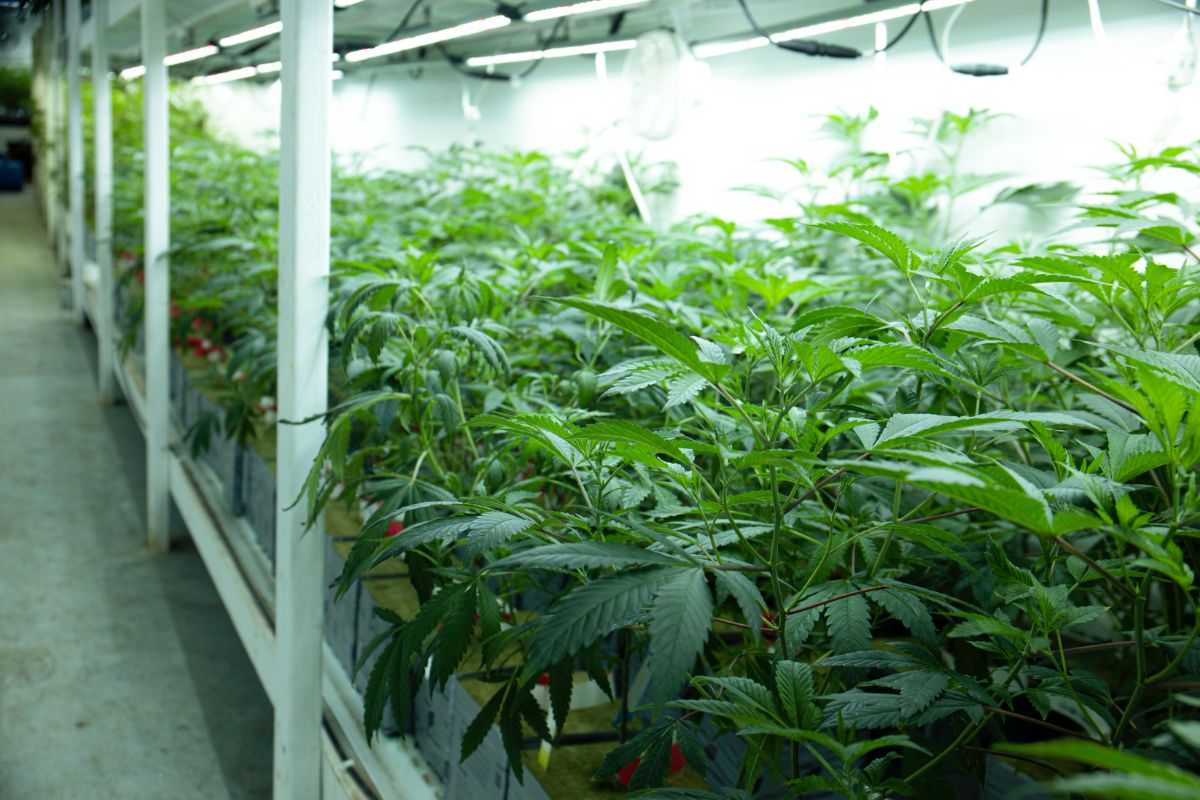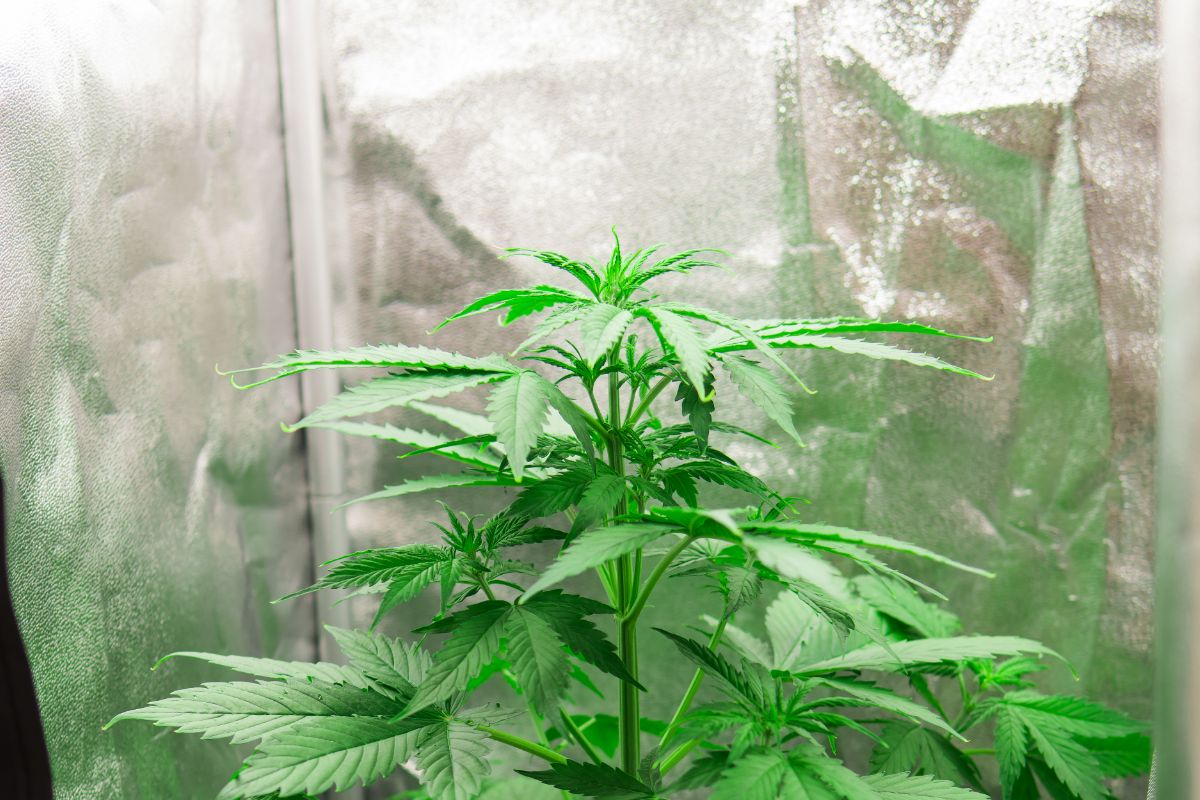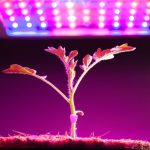As we all know, our plant babies need a few key things to thrive: Water, air, and light. When using a grow tent, water is easily taken care of, and ventilation handles things in the air department, but light, well… light’s a little trickier.

Yes, we can install some top-notch grow lights in our grow tents, but a lot of the time, grow lights aren’t directional enough for their entire glow to be utilized in such a small space.
To fix this inefficiency, we use reflective material to redirect stray light back to our crops, but not all reflective materials are made equal — Mylar is the best!
Interested in learning what mylar is and why it should be your go-to for lining the internal walls of your grow tent? Read on and all will be revealed.
What Is The Shiny Material Used In Grow Tents?
While mylar is the most commonly used reflective material in grow tents, it’s by no means the only option. In fact, you might be surprised just how many routes are available to you when trying to optimize your in-tent grow light array.
- Aluminum Foil — The cheapest and most basic DIY method of reflection. You can pick some up for pennies and then drape it all over your tent walls. The problem is, it’s only about 55–60% reflective.
In other words, foil will only prevent the loss of just over half the light that reaches the walls of your grow tent, which is better than nothing, but, comparatively speaking, not great.
- Emergency Blankets — Hopefully you’ve never been in an automobile collision, but those that have will know that the emergency services provide you with a strange shiny blanket when they reach you.
These are designed to retain as much body heat as possible, but they’re also a dynamite option for retaining light too.
- Mylar — Mylar is a cheap, highly reflective material. As mentioned earlier, it’s the most popular choice for grow tents. Also known as BoPET, which is short for biaxially-oriented polyethylene terephthalate, although mylar looks metallic, it’s actually a form of stretched plastic.
And then there’s the not-so-shiny options available to you…
- White Paint — Black absorbs light, and white reflects it. That’s why your granny always told you to wear lighter colors on summer days. But what she didn’t realize is that she was actually giving you some prime herb-growing advice — Thanks, granny!
- Panda Film — Panda film is named so for its monochromatic sides. One side is white, while the other is black. You simply install it with the white side facing inwards, and voilà, you’ve got some prime reflection!
- Orca Film — Similar to panda film, orca film has one black and one white side, but the white side is augmented with plastic microfibers that enhance its reflective qualities.
These microfibers also reinforce the film, meaning you’re less likely to see any tearing over time.
What Is The Best Reflective Surface For Light?

It should come as no surprise that the best surfaces for reflecting light are glass mirrors — There’s a reason they’re used to brighten up and “expand” rooms.
A complex dielectric mirror will be capable of reflecting as much as 99.999% of all light that hits it, but even a quality simple mirror will reflect about 99.9% light, which is incredibly impressive.
Highly polished metal surfaces are a close second in the reflection department. You’ve seen a bit of metal with a mirror finish before, right? Well, that’s what we’re talking about here.
Sadly, though, it’s not feasible to line the walls of our grow tents with expensive and heavy mirrors or metal, so we’re left with the options listed earlier, the best of which for reflecting light is mylar.
Is White Or Mylar More Reflective?
Matte white does a fantastic job of reflecting light, but it’s not quite as efficient as silver mylar. White mylar, on the other hand, performs at round about the same level as matte white.
And yep… There are different types and quality levels of mylar, which is another kettle of fish entirely. The best mylar for redirecting light is high quality silver mylar, but many pro growers choose diamond mylar instead.
Diamond mylar isn’t quite as reflective, but it doesn’t warp as much over time, ensuring an even diffusion over your crops.
By contrast, plain silver mylar can warp in the heat of the light, and as it bends, concentrated light may be reflected in certain areas, which can dehydrate and burn your plants.
What Percentage Of Light Does Mylar Reflect?
The highest quality silver mylar can reflect approximately 97% of stray light spread, while slightly lower quality mylar will reflect something to the tune of 95%.
It’s not a massive difference at the end of the day, so it’s nothing to sweat about, but it’s worth knowing how this material can vary from sheet to sheet.
Is Mylar Always The Best Choice For Grow Tents?
While mylar is the most reflective material, it’s not always the best choice. One of mylar’s flaws is that it also reflects a lot of heat, so, during those scorching summer months, it can put a lot of thermal pressure on your crop.
In these instances, matte white is a much better option, as it absorbs more heat, thus helping you keep internal temperatures under control.
Mylar is also quite delicate, especially compared to orca film, so wear and tear is a given over a long enough period. It’s always best to have plenty to spare for repairs throughout the growth cycle.
Are There Any Other Benefits Of Using Mylar In A Grow Tent?
Mylar isn’t just highly reflective; it has a secret superpower that makes it a top-notch candidate for lining your grow tent walls… It’s less permeable to gas and particulate matter.
What does that mean for you? Well, it means it’s an effective scent barrier, so if you’re trying to keep your little green thumb/lung operation on the down-low, mylar is the lining for you!
Final Thoughts
There you have it — Generally speaking, mylar is the best reflective material to use in your grow tent to improve energy efficiency and increase your yield, and for very little money too!
It’s quite fragile, but as long as you’re careful and keep some spare sheets to hand, you’re golden. Plus, the scent barrier it provides gives you a better chance of keeping your operation hush-hush, which may well be crucial.
- 5 Best Weed T-Shirts For Women - June 26, 2023
- What Is Stoner Girl Clothing? All You Need To Know - June 26, 2023
- What To Wear To A Cannabis Café: 10 Awesome Options - June 26, 2023










